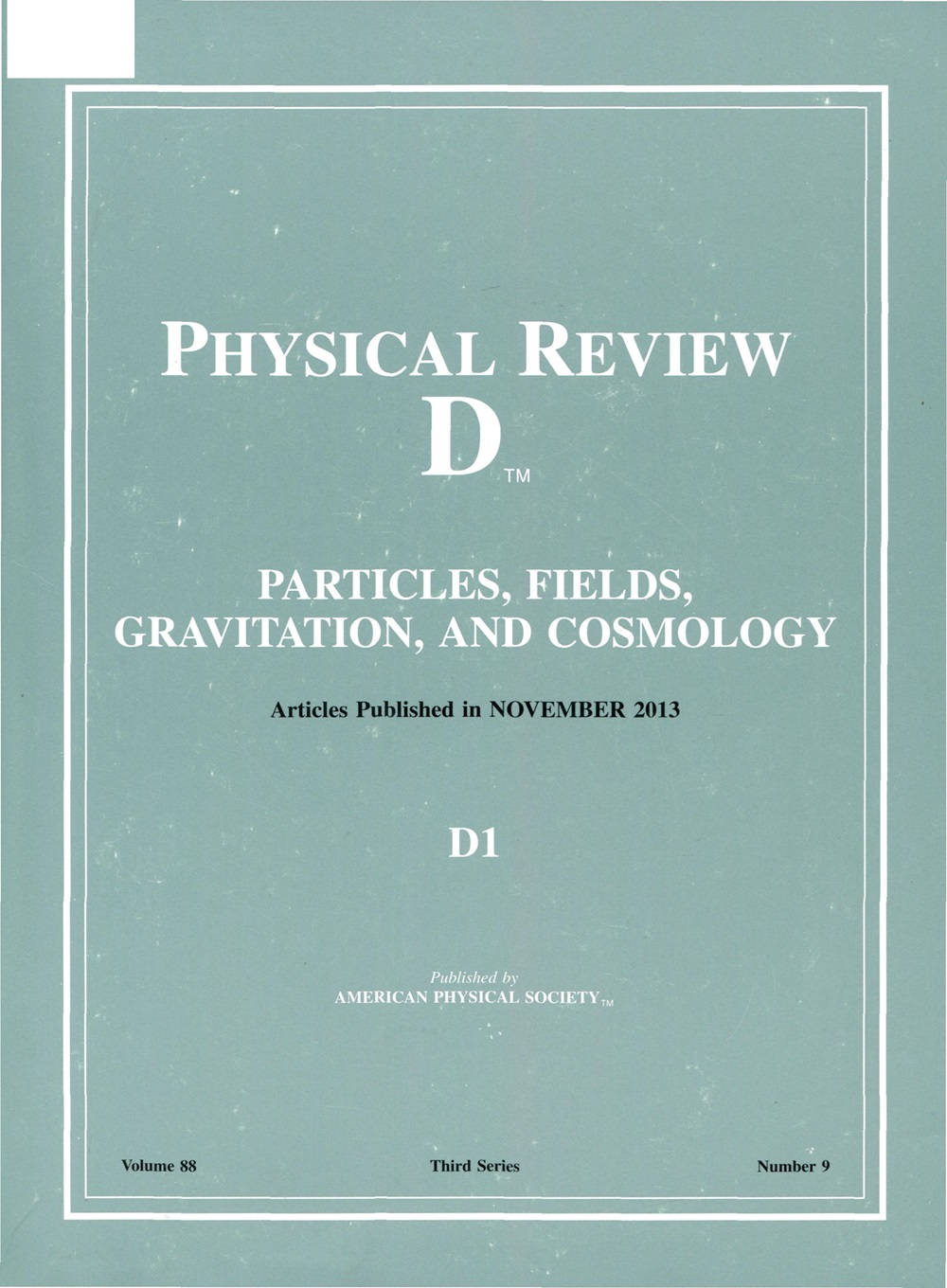Diósi-Penrose model of classical gravity predicts gravitationally induced entanglement
IF 5.3
2区 物理与天体物理
Q1 Physics and Astronomy
引用次数: 0
Abstract
We show that the dynamics of the Diósi-Penrose (DP) model of classical gravity can entangle the mechanical degrees of freedom of two separate particles. For standard experiments of gravitationally induced entanglement (GIE), we find that entanglement can be generated if and only if the particles are separated by a distance smaller than some limiting value dc, proportional to the only free parameter of the DP model. Greater distances can be achieved through new experimental configurations, where the initial wave functions of the particles are allowed to spread perpendicularly to the separation axis. Although the DP dynamics asymptotically drives the system to a separable state, we observe that, for reasonable experimental parameters, GIE can survive for more than a day. Our results therefore imply that GIE detection is not enough to validate quantum gravity. Experimental tests of GIE dynamics have nonetheless the potential to falsify the DP model.Diósi-Penrose经典引力模型预测引力诱导的纠缠
我们证明了经典引力Diósi-Penrose (DP)模型的动力学可以纠缠两个独立粒子的机械自由度。对于引力诱导纠缠(GIE)的标准实验,我们发现当且仅当粒子之间的距离小于某个与DP模型的唯一自由参数成正比的极限值dc时,才能产生纠缠。通过新的实验配置可以实现更大的距离,其中粒子的初始波函数被允许垂直于分离轴传播。虽然DP动力学渐进地将系统驱动到可分离状态,但我们观察到,在合理的实验参数下,GIE可以存活超过一天。因此,我们的结果表明,GIE探测不足以验证量子引力。尽管如此,GIE动力学的实验测试仍有可能伪造DP模型。2025年由美国物理学会出版
本文章由计算机程序翻译,如有差异,请以英文原文为准。
求助全文
约1分钟内获得全文
求助全文
来源期刊

Physical Review D
物理-天文与天体物理
CiteScore
9.20
自引率
36.00%
发文量
0
审稿时长
2 months
期刊介绍:
Physical Review D (PRD) is a leading journal in elementary particle physics, field theory, gravitation, and cosmology and is one of the top-cited journals in high-energy physics.
PRD covers experimental and theoretical results in all aspects of particle physics, field theory, gravitation and cosmology, including:
Particle physics experiments,
Electroweak interactions,
Strong interactions,
Lattice field theories, lattice QCD,
Beyond the standard model physics,
Phenomenological aspects of field theory, general methods,
Gravity, cosmology, cosmic rays,
Astrophysics and astroparticle physics,
General relativity,
Formal aspects of field theory, field theory in curved space,
String theory, quantum gravity, gauge/gravity duality.
 求助内容:
求助内容: 应助结果提醒方式:
应助结果提醒方式:


